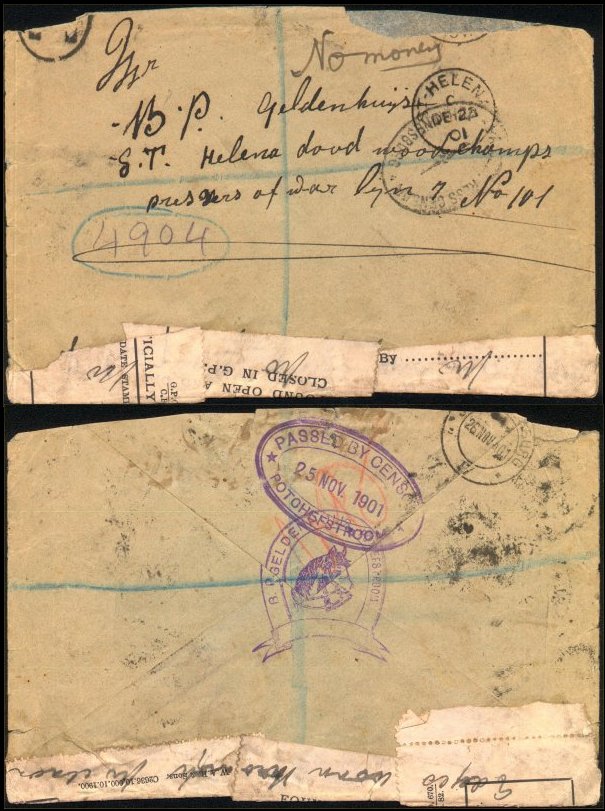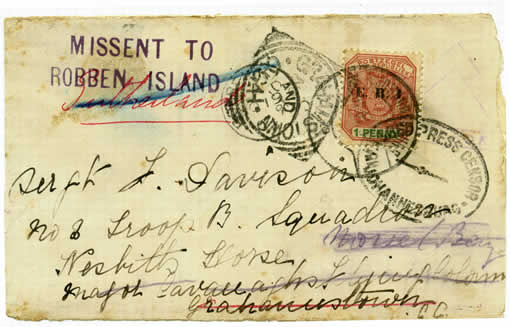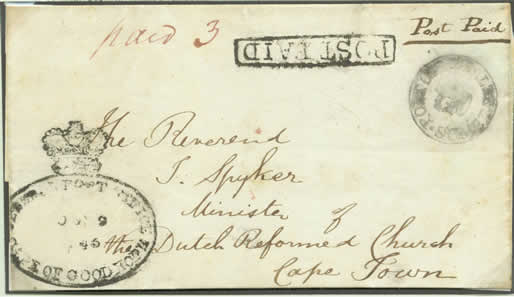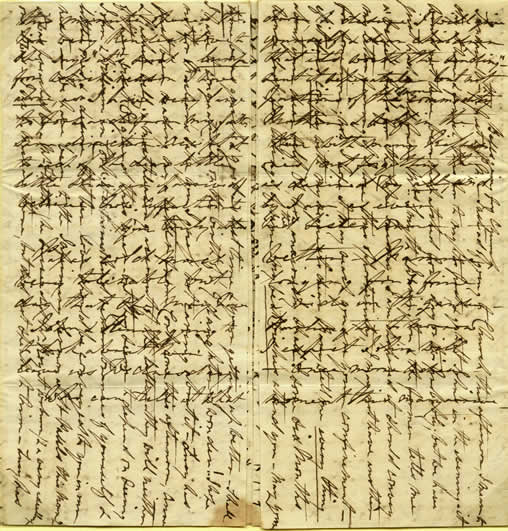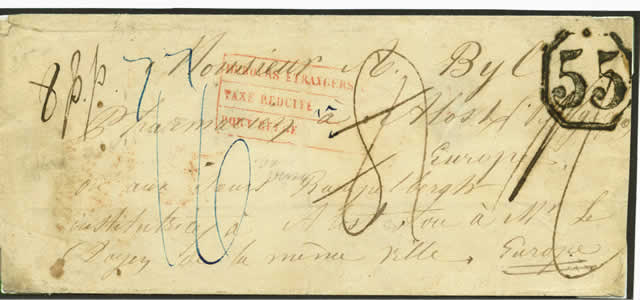Two ideologies namely British imperialism and Afrikanernationalism were to clash at the turn of the nineteenth century in South Africa. Britain sought the unification of whole of South Africa under the British flag. The existence of the two Boer republics namely the South African Republic (Transvaal) and the Orange Free State therefor was a stumbling…
Soldiers’and Seamen’s Privileged Penny Posts
The British Act of Parliament of 1795 During the early development of posts there was discontent for the financial burden imposed on soldiers and seamen in this respect. The British Act of Parliament in 1795 proclaimed a special rate for non-commissioned ranks serving in the army and navy – and their dependents. This entitled them…
The Batavian Republic 1803-1806
The Treaty of Amiens provided for the termination of the temporary British occupation of the Cape of Good Hope. The Cape of Good Hope was restored to the Batavian Government on 20th February 1803. Jacob de Mist was appointed as commissioner-generaland Jan Wilem Janssens as governor and ‘general-en-chef’. This effecively made Janssens the head of…
Officially Sealed Mails
Registered November 1900 cover from Potchefstroom, Transvaal to Boer prisoner of war at Deadwood Camp on St. Helena island, repaired at bottom with parts of a Cape of Good Hope post office seal, which is inscribed “Edges worn through (unclear)” on back. Violet Potchefstroom censor on reverse and black Johannesburg, Transvaal press censor on front.…
Missent Letters
Often due to errors made by mail sorters, letters were forwarded to incorrect destinations. Special handstamps (SP 1 to 5) were used to identify this missent mail. Missent mail was also marked in manuscript. Two were in use in Cape Town G.P.O (SP 1 and SP 2). Port Elizabeth, Paarl, Robben Island, Grahamstown and Kimberley…
The Crown-in-Circle Postmarks of the Cape of Good Hope
No official post offices were established in the country districts before 1816. The residence of every district’s laddrost served the purpose. The landdrost effectively undertaking the duty of post-master.
Palimpsest Letters
Palimpsest Letters were the result of the high cost of postage and form an interesting part of any Cape of Good Hope Postal history collection. The writer wrote first horizontally, then turned the page through 90 degrees and continued vertically. This way a single page instead of two could be sent, with considerable savings in…
The Octagonal Letterstamp of 1849
By January 1846 the Crown-in-Circle handstamps have been used for almost thirty years. They had not been renewed since their introduction and the Postmaster General referred to their worn state and requested from the Colonial Secretary a set of new stamps. Due to their condition some postmasters had already put the Crown-in-Circle stamps aside. He…
The ‘Coolie Hire Service’ in Cape Town
In 1846 there existed in Cape Town a so-called ‘Coolie Hire Service’.There is a strong likelihood that letters addressed within the vicinity of Cape Town between the period 1846-1855 were conveyed by means of private carriers. This service was entirely private and totally divorced from the operations of the official post office and it’s activities.…
The Dated Letter Stamp
From approximately 1883, three postmarks (PS 4 to 6) sometimes called Argus Wheels, were in use on circulars as well as newspapers of the Cape of Good Hope. Another postmark (PS 7) is, in the main, seen stamped on wrappers and circulars, but its use has also been noted on envelopes. The circle measures 27…
History of The Cape of Good Hope
The Cape of Good Hope is historically linked with the search for and defence of a sea route to India. It is a history of rivalry in trade and war between the Portuguese, the Dutch, the English and, to a lesser degree, the French.



